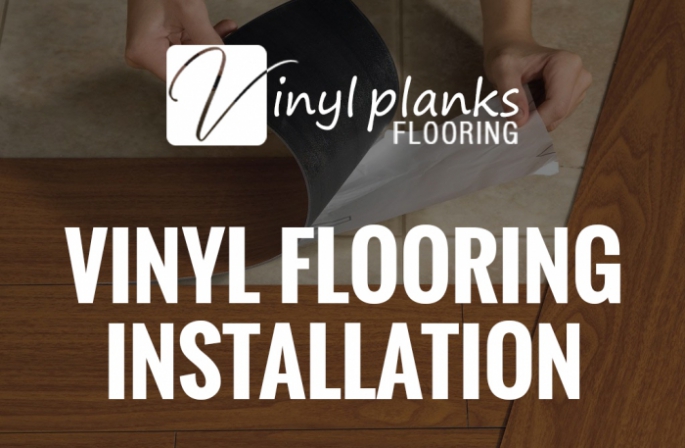Vinyl flooring is known for it's quality and attractive price. It is relatively easy to install, but if you're new to vinyl flooring and aren't familiar with vinyl installation, here are five simple steps that you can follow at home for
vinyl installation.
Once you have identified the room in which the flooring will be installed,
select the vinyl option that you like best and that fits your budget. Once you have the appropriate amount of flooring, you're ready to get rolling.
1. Make a blueprint of the room: Before you choose vinyl flooring, make sure the room you have selected for vinyl installation has a blueprint or a sketch. Accurately measure the room's dimensions. These drawings should be taken to a manufacturer or vinyl retail store. When choosing the amount of vinyl flooring you will need, buy a little extra for cutting, trimming and centering the pattern in the room.
2. Check the subfloor: Ensure the subfloor is in acceptable condition; it needs to be flat and smooth. If you have a concrete subfloor, fill the holes or gaps with a patching compound. When the compound dries up, remove the shoe molding in the room and do a final clean up.
3. Lay down the flooring: Put the
vinyl flooring flat on the surface and then roll it back to its original position to expose the sub-layer. Then, use craft paper to mark the edges of the wall.
4. Roll back the vinyl flooring: Now that the major part is done, the vinyl has to be rolled back over the template and pressed down firmly. After that, gently lift the vinyl back. The outer edge is where the vinyl flooring should be cut.
5. Spread adhesive material: Spread the adhesive to the wall that is there to the wall. Then cut the extra vinyl material using a scrap-cut tool and attach the flooring to the adhesive. If extra material is left over at the edges of the wall, trim it. After the adhesive material is dry, put back the furniture that you have moved.
Follow these vinyl installation steps and you will avoid having to hire a contractor to install it for you.
 Vinyl flooring is known for it's quality and attractive price. It is relatively easy to install, but if you're new to vinyl flooring and aren't familiar with vinyl installation, here are five simple steps that you can follow at home for vinyl installation.
Vinyl flooring is known for it's quality and attractive price. It is relatively easy to install, but if you're new to vinyl flooring and aren't familiar with vinyl installation, here are five simple steps that you can follow at home for vinyl installation. Admin0 Comments
Admin0 Comments



